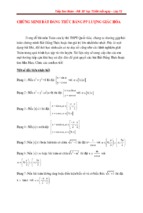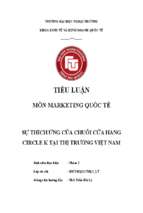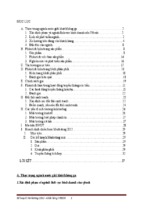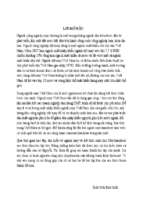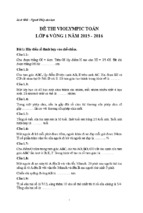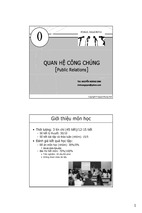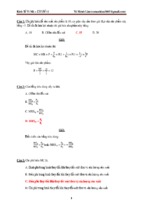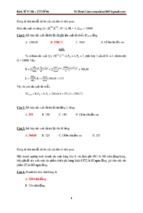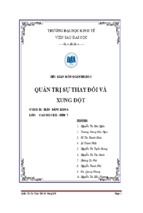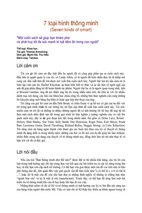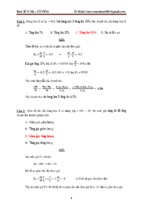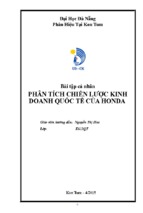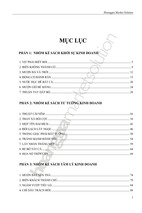Luis Cubeddu, Alex Culiuc, Ghada Fayad, Yuan Gao,
Kalpana Kochhar, Annette Kyobe, Ceyda Oner, Roberto Perrelli,
Sarah Sanya, Evridiki Tsounta, and Zhongxia Zhang
SDN 14/06
14/0614/XX
EMERGING MARKETS IN TRANSITION:
GROWTH PROSPECTS AND CHALLENGES
June 2014
IMF ST A FF DISC U SSIO N N O T E
INTERNATIONAL MONETARY FUND
Strategy, Policy, and Review Department
EMERGING MARKETS IN TRANSITION:
GROWTH PROSPECTS AND CHALLENGES
Prepared by Luis Cubeddu, Alex Culiuc, Ghada Fayad, Yuan Gao, Kalpana Kochhar,
Annette Kyobe, Ceyda Oner, Roberto Perrelli, Sarah Sanya, Evridiki Tsounta, and Zhongxia Zhang
Authorized for distribution by Siddharth Tiwari
June 2014
DISCLAIMER: This Staff Discussion Note represents the views of the authors
and does not necessarily represent IMF views or IMF policy. The views
expressed herein should be attributed to the authors and not to the IMF, its
Executive Board, or its management. Staff Discussion Notes are published to
elicit comments and to further debate.
JEL Classification Numbers:
E32, F43, O11, O47
Keywords:
emerging markets, growth, potential growth,
convergence, heterogeneity, structural reform,
productivity
Contact Authors’ E-mail
Addresses:
[email protected],
[email protected]
CONTENTS
Executive Summary ................................................................................................................................................................. 3
Why Was Emerging Market Growth High in the Last Decade? ............................................................................. 4
Why Are Emerging Markets Slowing Down? ................................................................................................................ 9
A. External and Domestic Demand Factors ............................................................................................................10
B. Cyclical and Structural Factors................................................................................................................................11
Medium-Term Prospects for Emerging Markets .......................................................................................................12
Policy Priorities Going Forward ........................................................................................................................................15
A. Macroeconomic Policy Priorities ...........................................................................................................................15
B. Rebalancing Growth ...................................................................................................................................................16
C. Improving Growth Prospects through Structural Reforms .........................................................................17
Conclusion ................................................................................................................................................................................19
Annex 1. Organizing the Emerging Market Universe: The Role of External Linkages .................................21
Annex 2. Structural Reforms: Lessons from Four Case Studies............................................................................24
Annex 3. Prospects for the “Next” Emerging Markets?...........................................................................................27
Analytical Appendix ..............................................................................................................................................................29
A. Supply-Side Decomposition of Growth and Estimating Potential Growth………………………………...29
B. Impact of External Factors on Emerging Market Growth…………………………………………………………...30
C. Domestic and External Factors Explaining the Current Slowdown…………………………………………..…32
References ......................................................................................................................................................................... ....333
2 INTERNATIONAL MONETARY FUND
EXECUTIVE SUMMARY1
After decades of stalled and even regressed convergence, emerging markets (EMs) started closing
the income gap with advanced economies in the last decade. This “return to convergence” was
facilitated by supportive external conditions, improved policy frameworks, and growth-enhancing
reforms of the previous decade in many EMs. It was also a widespread phenomenon, with nearly half
of all EMs growing at higher rates in the 2000s compared to the 1990s.
However, EMs are now entering a period of slower growth. After swiftly rebounding from the global
financial crisis, their growth rates in the last few years have fallen not only below the post-crisis peak
of 2010-11, but also below the levels seen in the decade before the crisis. The external conditions
that supported their convergence over the last decade—namely, buoyant global trade, high
commodity prices, and easy financing conditions—are not expected to prevail in the coming years.
And more recently some large EMs have come under market pressure as their growth outlook
relative to advanced economies started to look less rosy, advanced economies began to normalize
their monetary policy, and external financial conditions started to tighten.
This Staff Discussion Note delves deeper into the factors behind EMs’ strong growth performance
over the last decade and the more recent slowdown to shed further light on their growth prospects.
It complements the analysis in the IMF’s April 2014 World Economic Outlook (and the forthcoming
Spillover Report), exploring the role of supply-side factors, external conditions, and macroeconomic
policies on growth for a larger sample of EMs. We find that higher growth rates during the 2000s
reflected increased productivity in most countries. On the demand side, a confluence of favorable
external conditions added to EM growth, though the effect of these conditions varied across EMs
depending on their external linkages and policies. To better understand these differences,
throughout our analysis we assess the role of (i) trade and financial openness; (ii) advanced markets
versus emerging markets as trading partners; and (iii) commodity dependence and changes in terms
of trade. Annex 1 attempts to organize the highly heterogeneous EM universe.
What do these findings tell us about the medium-term growth prospects for EMs? Since part of the
recent slowdown in EMs reflected cyclical factors, including weaker demand from trading partners,
we anticipate a recovery in EM growth as demand from advanced economies strengthens. Beyond
the cyclical recovery, attaining the high growth rates of the last decade over the medium term will
require concerted policy effort. Tighter external financing conditions are likely to increase
1
This paper was presented at the IMF/World Bank Annual Meetings Conference on October 8, 2013 entitled
“Emerging Markets: Where Are They, Where Are they Headed?” Under the guidance of Kalpana Kochhar, the paper
was prepared by a staff team led by Luis Cubeddu and Ceyda Oner and including Alex Culiuc, Ghada Fayad, Yuan
Gao, Annette Kyobe, Roberto Perrelli, Sarah Sanya, Evridiki Tsounta, and Zhongxia Zhang. The paper has benefited
from comments by the conference participants, in particular, Tim Adams, Anders Åslund, Luis Miguel Castilla, Ricardo
Hausmann, Sri Mulyani Indrawati, David Lipton, Manuel Ramos-Francia, and Nouriel Roubini.
INTERNATIONAL MONETARY FUND
3
EMERGING MARKETS IN TRANSITION
investment costs and debt service burdens, and less supportive commodity prices may dampen
investment in commodity-exporting EMs. Supply-side constraints and weaker employment
expansion could hold back growth where binding. Finally, in countries where external and financial
imbalances were allowed to build, growth in the coming years will slow as economies address risks
to their balance sheets.
How should policies respond to this prognosis? With the prospect of a less-supportive external
environment, EMs’ growth engines of the last decade will need to be reoriented to sustainable
domestic sources and revitalized through structural policies to improve factor allocation and boost
productivity. And while policies should be tailored to country-specific circumstances, we highlight
the general contours of macroeconomic and structural policies necessary to mitigate the effects of
changing external conditions so that EMs can sustain or restore growth.
WHY WAS EMERGING MARKET GROWTH HIGH IN
THE LAST DECADE?
The last decade provided strong external tailwinds that, when combined with broadly improved
fundamentals, helped EMs grow robustly. The surge in productivity enabled EMs to restart closing the
income gap relative to advanced economies. However, the overall strong EM performance masks
important heterogeneity across countries, reflecting differences in external linkages and also policies.
Percent
GDP per capita growth
(weighted average)
EMs went through a growth spurt in the last decade and now account for half of global
output. After suffering important setbacks during the 1980s and 1990s, starting with the Latin
American debt crises of the early 1980s and continuing with the Asian crisis of late 1990s, EMs
enjoyed strong and robust growth in the 2000s. EM growth increased by an average of 4¾ percent
between 2000 and 2012, about 1 percentage point higher than the average observed during the
previous two decades (Figure 1).2 This strong growth performance was fairly broad-based, with 60
percent of EMs having higher growth in the 2000s compared to the previous decade. Moreover, this
growth spurt took place when growth in advanced markets (AMs) remained stable. As a result, EMs
now account for
Figure 2. EM Convergence
Figure 1. Real GDP Growth 1/
about half of global
7
10
07-11
8
output in purchasing
6
02-06
6
5
92-96
power parity (PPP)
67-71
4
4
72-76
terms and have
2
97-01
3
77-81
82-86
0
returned to a
62-66
2
-2
convergence path to
AMs
EMs
1
-4
87-91
higher income status
-6
0
1960 1965 1970 1975 1980 1985 1990 1995 2000 2005 2010
15%
20%
25%
(Figure 2).
Source: WEO and IMF staff calculations.
1/ Dash lines represent decade average growth.
2
EM GDP Per Capita Relative to the U.S. (PPP, 5Y avg)
Source: Penn Table 7.1, WEO and IMF staff calculations
By focusing on 2000-12, which covers EM crises in the early 2000s, the boom years, the global financial crisis and
recovery, we abstract from cyclical fluctuations and analyze the broad trends.
4 INTERNATIONAL MONETARY FUND
Favorable external conditions, along with improved policy frameworks, played a major role in
driving this strong growth performance. During 2000-12, except for a short-lived setback during
the global financial crisis, EMs benefited from (i) rising global trade, reflecting expanding supply
chains; (ii) easy financing conditions driven by low interest rates in AMs; and (iii) high and rising
commodity prices (Figure 3). These favorable conditions, coupled with continued trade and financial
liberalization, facilitated a surge in capital flows and investment, resulting in higher productivity. In
addition, many EMs also used the decade to implement structural reforms, strengthen policy
frameworks, reduce vulnerabilities and build buffers. These efforts resulted in lower public and
external debt and sovereign spreads, improved international reserve coverage, and more flexible
exchange rate regimes in a number of EMs (Figure 4).
Figure 3. Favorable External Conditions and Increased Integration, 1990-2012
12
EM Export Volume
Growth 1/
(In percent)
U.S. Long-term Interest Rate
(Average annual, in percent)
10
7
14
6
11
8
3
6
2
5
1
80%
0
2000-12
90%
140%
2
1990-99
100%
Trade
openness
(right axis)
6
7
4
180%
160%
10
4
8
Trade and Financial Openness 2/
(Median of EMs, percent of GDP)
12
5
9
Commodity Price Growth
(Average annual growth,
in percent)
120%
4
100%
-2
0
1990-99
2000-12
Financial
openness
1990-99
2000-12
80%
70%
60%
1990 1995 2000 2005 2010
Source: WEO and IMF staff calculations.
1/ The 2000-12 average is weighed down by 2008-09, when trade collapsed becuse of the global financial crisis. The 2000s average is higher than the 1990s excluding these
years or excluding post-2008.
2/ Financial openness is defined as total external assets plus liabilities. Trade openess is defined as total exports plus imports.
Figure 4: EM Fundamentals
800
FX Regime: average degree of
exchange rate flexibility 1/
EMBI Spreads
(Basis points)
6
700
44
5
600
500
46
42
4
100
0
36
1
200
38
2
300
40
3
400
34
32
0
2000
2012
External Debt
(In percent of GDP)
2000
2012
2000
2012
Source: AREAER database, Bloomberg, WEO and IMF staff calculations.
1/ FX regime index is from 1 to 10. No separate legal tender=1, Free floating=10 .
INTERNATIONAL MONETARY FUND
5
EMERGING MARKETS IN TRANSITION
Higher productivity growth facilitated the leap in convergence. Using a production function
approach to decompose growth, we find that higher total factor productivity (TFP) explains 1½
percentage points of the 1¾ higher average growth rate in EMs in the last decade compared to the
1990s (Figure 5; see Analytical Appendix,
Figure 5. Contribution to Real GDP Growth
3
(Simple average, in percent)
Section A). In fact, TFP growth turned positive
Capital
7
Labor
in EMs across all regions over the last decade
6
TFP
Real GDP Growth
1990-1999
after declining in both Latin America and the
5
2000-2012
Middle East and North Africa (MENA) region in
4
the 1990s. Notwithstanding this boost in TFP,
3
factor accumulation remained the main driver
2
of output growth in EMs throughout the 2000s.
1
0
Strong terms of trade growth and easy
-1
financing conditions in particular facilitated
EMDCs
EM Asia
LAC
EM Europe
MENA & CCA
higher investment, and thereby capital
Source: Penn World Table 7.1, WEO, and IMF Staff Calculations
accumulation, in a number of EMs (Tsounta,
2014).
The increase in productivity growth likely reflects a number of factors, including (i) gains from
reforms of earlier decades (e.g., increased trade and financial liberalization, labor market reforms,
deregulation); (ii) reallocation of factors to higher productivity sectors; and (iii) spillovers from
increased direct investment (in turn facilitated by favorable external conditions).4 Such productivity
gains are likely to be temporary to some extent, since productivity measures tend to be procyclical
and are often overestimated during boom years (Basu and Fernald, 2001).5 More importantly, the
impact of each of these factors to EM productivity varies substantially across countries and has been
analyzed in other studies, including a recent Staff Discussion Note (Dabla-Norris, et al., 2013). That
said, more work is needed to understand productivity growth and its procyclicality in EMs.
Favorable external conditions explain nearly half of the leap in EM growth. Using long-term
growth regressions, we estimate the historical impact of external factors on EM growth. The
approach follows Arora and Vamvakidis (2005) and uses a panel dataset of 66 EMs for the period
1990-2010, in which variables are averaged over consecutive five-year periods (see Analytical
Appendix, Section B). Key dependent variables include trading partner growth, changes in terms of
3
TFP measures the efficiency with which factors of production (capital, labor, and human skills) are used in the
production process. It is defined as the residual of output growth and the growth in factor accumulation.
4
The structural transformation differed across regions. In Asia (China, Thailand, and Malaysia) the employment shifts
have been out of agriculture and into higher productivity manufacturing, while in Europe the shift has been away
from central planning towards the previously underdeveloped services sector (World Bank, 2008).
5
Not all favorable external conditions translated into higher productivity. For example, in Chile, despite higher metal
prices, TFP growth turned negative in the last decade, in part reflecting the expansion of mining production into
areas of lower marginal productivity where production has become profitable due to higher commodity prices. This
is consistent with the experience in commodity-exporting advanced economies like Australia, Canada, and Norway.
6 INTERNATIONAL MONETARY FUND
trade and in long-term U.S. interest rates, country-specific fundamentals like the degree of
commodity dependence, trade and financial openness, and public and external balance sheets.
Focusing on five-year averages allows us to analyze longer-term relations and avoid endogeneity
issues.6 Broadly speaking, we find that external demand (facilitated by rising liberalization), lower
global interest rates, and higher commodity prices accounted for about half of the increase in
growth across EMs in the 2000s relative to the 1990s. We differentiate our results by economic
fundamentals below.
Growth elasticity
2007-2011
2002-2006
1997-2001
1992-1996
1987-1991
1982-1986
1977-1981
1972-1976
1967-1971
Partner growth elasticity
Median Exports/GDP, percent
External demand was an increasingly important growth driver, particularly in more open
economies. Rising global trade volumes, coupled with further trade liberalization, boosted growth
in more non-commodity export-oriented EMs. We estimate that about 25 percent of the higher
growth registered in the average non-commodity EM in the 2000s (compared to the previous
decade) was due to contributions from external demand—a combination of increased trade
openness and marginally higher trading partner growth. As expected, this share rises with the
country’s trade openness. For example, EMs in the top quartile in trade openness (i.e., exports above
35 percent of GDP) grew on average 2 percentage points more in the 1990s, and nearly 40 percent
of this increase can be explained by higher external demand. Reflecting the trend of continued trade
liberalization, the
Figure 6. Trading Partner Growth Elasticities
sensitivity of EM growth
6a. All trading partners
6b. AM vs. EM trading partners
to demand from trading
1967-1991
1.0
2.0
30
partners has been rising
1992-2001
Median Exports/GDP, percent
2002-2011
(RHS)
since the 1990s (Figure
1.5
25
0.8
Partner growth 95 percent
6a). The higher
elasticity
conf. interval
1.0
20
0.6
sensitivity is found with
0.5
15
respect to both AM and
0.4
0.0
10
EM trading partners, the
0.2
latter reflecting rising
-0.5
5
trade with EMs (Figure
0.0
AM partners
EM partners
6b).
Source: WDI and IMF staff calculations.
Demand from AMs continued to matter more for EM growth. While the sensitivity of EM growth
to EM trading partners rose rapidly over time, EM growth remained more sensitive to demand from
AMs (a one percentage point increase in AM trading partners’ growth would increase growth by
around 1 percentage point). Demand from AMs continues to dominate, since rising within-EM trade
partly reflects growing supply chains that ultimately meet final demand from AMs.
6
At the same time, the external conditions that we explore could be endogenous with respect to each other,
potentially biasing results upward.
INTERNATIONAL MONETARY FUND
7
EMERGING MARKETS IN TRANSITION
For commodity exporters, demand from large EMs played a more prominent role. We assess
whether the rising sensitivity of EM growth to EM
Figure 7. Elasticity of EM Growth to BRICS
vs. other EM trading partners
trading partners reflects Brazil, Russia, India, China,
and South Africa’s (BRICS) growing prominence in
1.6
BRICS partners
the global economy. Our long-term historical
Non-BRICS EM partners
1.2
regressions yield, on average, no significant
difference between demand from BRICS or other EMs 0.8
in explaining EM growth (Figure 7). However, this
0.4
average result conceals an important finding:
0.0
commodity exporters’ growth is found to be highly
-0.4
sensitive to demand from BRICS countries,
All
Non-commodity
Commodity
confirming the growing importance of these large
Exporters
Exporters
7
EMs’ demand on global commodity prices.
Source: WDI and IMF staff calculations.
Favorable terms of trade helped commodityexporting EMs. The large and sustained increase in
commodity prices raised investment and GDP growth
in most commodity-exporting EMs, many of which
enjoyed an unprecedented income windfall. For the
average commodity-exporting EM, the 5¼ percent
annual improvement in terms of trade over the last
decade contributed to a ¾ percentage point increase
in growth – about a quarter of the higher growth
seen in the 2000s. On the other hand, the rise in
commodity prices did take a toll on growth for the
average commodity importer, whose growth was
nevertheless supported by other factors (Figure 8).
Figure 8. Elasticity of EM Growth to
Terms of Trade Changes
0.25
0.20
0.15
0.10
0.05
0.00
-0.05
-0.10
Non-commodity
exporter
Commodity exporter
Source: WDI and IMF staff calculations.
Easy financing conditions boosted investment and growth in financially open EMs. Lower
global interest rates and tightening of borrowing spreads (the latter also reflecting improved
fundamentals) helped to boost domestic demand in EMs, particularly in the more financially open
EMs. For the median financially open EM, we find that the 170 basis point decline in global real
interest rates in the 2000s (as proxied by the 10-year U.S. T-bond rate) raised GDP growth by ¼ of a
percentage point – about 15 percent of the higher growth these countries saw in the 2000s. Again,
the impact varied widely across countries depending on their financial openness; those in the top
quartile of financial openness grew on average by a ½ percentage point more in the last decade
owing to these lower global interest rates.
7
The significance of BRICS’ growth for non-commodity EMs is sensitive to the estimation period of choice. Figure 7
presents results for the period covering 1992-2011. Research focusing on the more recent past finds a larger role for
BRICS, particularly China (IMF, 2014c, 2014d).
8 INTERNATIONAL MONETARY FUND
Real GDP Growth (percent, 2008-12 average)
However, EM performance since the global financial crisis has been affected by how well they
have managed these “good times.” As has been
Figure 9. Current Account Deficit 2008 vs. Growth 2008-12
documented in other studies (e.g., Blanchard, Das,
10
and Faruqee, 2010), EMs that allowed the buildup of
CHN
8
NGA
PAN
financial and external imbalances and vulnerabilities
IND
IRQ
PER
6
IDN
VNM
have seen much weaker growth since 2008.
KAZ ARG
SGP
URY
DOM
PHL
COL MAR
MYS
4
Specifically, countries that entered the crisis with
TUR JOR
ISR
CHL
AGO
CRI
EGY GTM
TWN
BRA POL PAK
HKG
excessively large current account deficits, like those in
THA KOR
2
ZAF
MEXTUN SWZ
VEN
SVK
RUS
Eastern Europe, have taken a much longer time to
ARM
0
BIH
CZE
EST HUN
JAM
recover as they deleverage and repair their balance
BGR
EUR
UKR ROM LTU
SVN
-2
8
Other regions
LVA
sheets (Figure 9). Countries that had less procyclical
HRV
-4
policies in the lead-up to the global financial crisis
-20
-16
-12
-8
-4
0
4
8
12
16
20
Current Account Deficit (in percent of GDP), 2008
were able to use their policy space and recover faster.
Source: WEO and IMF staff calculations.
WHY ARE EMERGING MARKETS SLOWING DOWN?
Growth in most EMs has been slowing since 2010-11. Their recovery from the global financial
crisis peaked in 2010-11, and since then growth has been decelerating across EMs. In fact, 80
percent of EMs decelerated in 2012, and by end-2013, EM growth was on average 1½ percentage
points lower than in 2010-11. This synchronized slowdown is comparable in its breadth and
persistence to earlier crises, when growth in over 70 percent of EMs slowed at the same time for a
period of 4-6 quarters (Figure 10). What is different this time, though, is that the episode is not due
to a crisis. While the synchronized nature of this slowdown points to potential common factors, such
as weaker external demand
Figure 10. Share of EMs Decelerating Simultaneously, 1993-2013 1/
and/or the normalization of
(Based on quarterly growth, in percent of sample)
100
100
domestic demand from postDot-com bubble/
Current
Lehman
Asian
911/ARG-BRA90
90
deceleration
fallout
crisis
crisis peaks, its persistence
TUR crises
Tequila
80
80
crisis
suggests that structural factors
70
70
may also be at play. There are
60
60
also important differences in
50
50
the magnitude of the slowdown
40
40
across countries. For example,
30
30
20
20
since 2010-11 China’s output
10
10
growth slowed by 2¼
0
0
percentage points (to around
1993Q1 1995Q1 1997Q1 1999Q1 2001Q1 2003Q1 2005Q1 2007Q1 2009Q1 2011Q1 2013Q1
7¾ in 2013), Brazil’s slowed by
Source: Haver, WEO and IMF staff calculations.
1/ Blue bars show periods when the share of EMs' decelaration is larger than 65%.
2¾ percentage points (to a
mere 2¼ percent), while South Africa’s deceleration has been more tamed.
8
The same inverse relation is found between the cumulative current account deficits in the five years before 2008
and growth in the five years after 2008.
INTERNATIONAL MONETARY FUND
9
EMERGING MARKETS IN TRANSITION
A. External and Domestic Demand Factors
What role did external and domestic factors play in explaining the recent slowdown? To
answer this question, we estimate a pooled panel ordinary least square (OLS) regression for a
sample of 24 EMs for the period 2010-13 (see Analytical Appendix, Section C).9 We study how the
size of the slowdown is explained by external and domestic factors. External conditions are proxied
by a trading partner’s real import demand, the change in terms of trade, the U.S. 10-year bond yield,
global risk aversion (measured by the VIX index), and capital flows (measured by the ratio of the
financial account balance to GDP). Domestic conditions are proxied by the fiscal policy stance
(measured by the change in the cyclically adjusted primary balance to potential GDP), the monetary
policy rate, and the exchange rate regime. Initial conditions (in 2010) include each country’s
exchange rate deviation from fundamentals, the output gap, and the degree of financial openness
(measured ratio of external assets and liabilities to GDP). Controlling for initial conditions also allows
us to analyze the slowdown in growth beyond what would be implied, if any, by the natural
convergence process.
Our analysis suggests that much of the slowdown is explained by weaker external demand.
The growth slowdown since 2010-11 is largely explained by lower demand from trading partners
through 2012 playing a smaller (yet still
Figure 11. Contributions to Slowdown
statistically significant) role in 2013 (Figure
(Change in percentage points)
11).10 When trading partners are split into
0.5
AMs, China, and other EMs, we find that AMs
0
and China explain most of the change in
external demand for EMs. Other external
-0.5
factors (changes in terms of trade, and external
Unexplained component
financial conditions), were not statistically
-1
Unwinding fiscal stimulus
significant in explaining the growth slowdown
Weakening trading
-1.5
during the 2011-13 period, even after
partners' import demand
controlling for the degree of commodity
-2
2012 to 2013
2011 to 2012
dependence, financial openness, and the
Source: WEO and IMF staff calculations.
exchange rate regime. This is likely due to the
annual averages of terms of trade, VIX, and U.S. 10-year yields being relatively stable during this
period.
9
A larger sample is truncated to 24 EMs owing to limited data on output gaps and cyclically adjusted fiscal balances;
see Fayad and Perrelli (2014) for details.
10
The importance of external factors in explaining the bulk of variance of growth dynamics in EMs was established in
IMF (2014c), based on a VAR analysis on quarterly data for 1998-2013. IMF (2014c) also finds that the influence of
internal factors has increased in recent years and that these factors appear to be reducing growth rather than
spurring it. Fayad and Perrelli (2014) obtain similar results using growth surprises, rather than growth outturns, as
their explanatory variable, and for country-specific decompositions of external vs. domestic sources of slowdown.
10 INTERNATIONAL MONETARY FUND
Domestic factors also played a role in explaining the recent slowdown, although their
contributions varied across time and countries. The role of fiscal policy in particular changed over
these years; policy stance turned contractionary in 2013 in many countries, reflecting the unwinding
of stimulus enacted in response to the global financial crisis. After controlling for initial conditions in
2010, EMs that were overheating prior to the slowdown (proxied by positive output gaps and
overvalued exchange rates) were also found to experience sharper growth slowdowns. Other
idiosyncratic factors not found significant in the regression (the unexplained component in Figure
11), such as the monetary policy stance, were important for a group of EMs, especially in 2013.
B. Cyclical and Structural Factors
The persistence of the slowdown would depend on whether it is driven by cyclical or
structural factors. A slowdown driven by structural factors (i.e., a decline in the economy’s potential
growth rate) would be harder to reverse, and thus more persistent, while a cyclical downturn would
be more temporary. However, discerning the extent of structural and cyclical factors is a complex
exercise and subject to much uncertainty. It requires estimating an economy’s potential growth rate,
which is unobservable and time varying. Potential growth tends to be procyclical, rising during good
times as investment and capital accumulation rises and TFP also improves, and similarly declining in
bad economic times.
Notwithstanding limitations, we attempt to decompose the current slowdown into cyclical
versus structural components (see Analytical Appendix, Section A and Tsounta, 2014). We estimate
potential growth rates for 70 EMs individually over 1980-2018 based on standard (Solow-style)
growth accounting methodologies (Sosa, Tsounta, and Kim, 2013). First, we decompose the sources
of actual output growth into accumulation of factors of production (capital and quality-adjusted
labor, that is, human capital) and TFP and make assumptions for the path of factors or production
and TFP based on historical trends and demographic projections for the period 2013-18. To obtain
potential growth estimates for each year, we then use a battery of commonly used filtering
techniques to measure the trend of the subcomponents of output (namely, capital, labor, and TFP),
smoothing out cyclical fluctuations. The structural component of the slowdown is estimated as the
change in the potential growth rate from a historical average (e.g., 2000-12 versus 2013-18). The
cyclical part of the slowdown is the residual from the change in actual growth rates (between 201011 and 2012-13) and the structural change.11
11
We use the average for 2010-11 as a starting point since most EMs experienced a slowdown from their cyclical
peak, either in 2010 or 2011.
INTERNATIONAL MONETARY FUND 11
EMERGING MARKETS IN TRANSITION
We find that, on average, cyclical and structural factors are equally important in explaining
the recent growth slowdown in EMs.12 This result implies that some of the slowdown would be
transitory—the cyclical component—and that stronger growth would resume as growth picks up in
trading partners (mostly AEs). In contrast, the slowdown due to lower potential growth rates is more
persistent and would require concerted policy efforts to counter. As noted earlier, the decline in EM
potential growth is more difficult to explain, and likely reflects country-specific factors, the
unwinding of very stimulative external conditions, and the permanent impact of the global financial
crisis on growth potential in EMs or their
Figure 12. Composition of the Recent Growth Slowdown
AM trading partners. Having said that, the
(Growth change 2012-18 versus 2003-11, percentage points)
relative roles of cyclical versus structural
0.00
factors in explaining the slowdown varies
-0.50
significantly across EMs (Figure 12). For
example, structural factors appear to
-1.00
weigh more on growth in Emerging
-1.50
Europe, where the gains from
Cyclical slowdown
liberalization may have raised the level of
Structural slowdown
-2.00
Total slowdown
potential output rather than growth, while
-2.50
cyclical factors appear to be more
EM Asia
EM Europe
EMDCs
LAC
MENA and
CCA
dominant in Emerging Asia (see Tsounta,
Source: Tsounta (2014).
2014, for country-specific analysis).
MEDIUM-TERM PROSPECTS FOR EMERGING MARKETS
Over the medium term, external conditions are projected to turn less favorable for most EMs.
On the upside, the outlook for the global economy as outlined in the April 2014 World Economic
Outlook (IMF 2014c) envisages that AMs will continue to recover from the global financial crisis,
albeit at different rates (Figure 13). As advanced economies recover, EMs would also bounce back
from the cyclical downturn, drawing strength from higher external demand. At the same time, AMs
are not expected to go back to the debt-fueled growth rates seen before the crisis, and the
amplifying effects of trade liberalization are likely to be one-off. Potential growth in AMs, particularly
in core European countries, may also be lower given the structural impact of the crisis. Moreover,
the gradual recovery in AMs will come with tighter global financial conditions as they normalize
monetary policies, with bouts of volatility similar to those experienced since May 2013. Commodity
prices are also likely to soften somewhat in the coming years, reflecting in part China’s projected
gradual slowdown and rebalancing. While this is welcome news for commodity importers, it will take
some of the steam out of growth in commodity exporters.
12
See IMF (2013, 2014a) for a breakdown of cyclical versus structural roots of the recent slowdown in the BRICS and
ASEAN-5, respectively.
12 INTERNATIONAL MONETARY FUND
Figure 13. WEO Projections of Medium-term External Conditions, 2014-18
7
Commodity Price Growth
(Average annual of 2014-18, in percent)
EM Export Volume Growth
(Average annual, in percent)
0
6
Projection
2014-18
Long-term
interest rate
5
-1
4
-1.5
4
7
6
-0.5
5
U.S. Interest Rate
(Average annual, in percent)
3
-2
2
-2.5
3
1
-3
2
2009-13
2014-18
0
-3.5
Crude Oil
Metals
Food
Short-term
interest rate
2000
2004
2008
2012
2016
Source: WEO and IMF staff calculations.
These changing external conditions are likely to affect factor allocation and productivity
growth. Physical capital accumulation is expected to moderate as the low global interest rates that
facilitated large capital flows to EMs start to rise and financing investments becomes more costly.
Softer commodity prices would reduce the expected returns from expanding capacity further in the
commodity sectors, slowing down investment in commodity-exporting countries. Balance sheet
repair in euro zone countries will continue to weigh on investment in emerging Europe, while
continued political tensions could affect investment in MENA countries. Further contributions from
labor accumulation may also be limited in the coming years by aging populations in a number of
EMs and by limits in reducing natural rates of unemployment.13 TFP growth may be lower over the
medium term in the absence of growth-enhancing reforms as well, given its cyclical nature.
These in turn imply lower potential growth in EMs over the medium term relative to the
2000s. Following the production function methodology outlined in the previous section (and
Analytical Appendix, Section A), we estimate potential growth for 2013-17 assuming capital and TFP
grow at the same average annual rate for 2000–12, although this assumption might be optimistic
given that both TFP and capital accumulation growth were high in the 2000s owing to conditions
that are not likely to persist. As for labor, we assume that it grows in line with the working-age
population (UN Population Projections database) adjusted by unemployment rate projections (April
2013 WEO). We also assume that labor force participation rates are unchanged and that the human
capital component increases at the same pace as in 2005–10. We find that the strong growth
momentum of the last decade may not be repeated in the coming years if recent historical trends
for factor accumulation and TFP continue, despite this assumption being optimistic (Figure 14).
Potential GDP growth rates in EMs are estimated to average roughly 3½ percent during 2013-17,
13
Favorable demographics and low participation rates (particularly for women) present opportunities for increasing
potential growth rates in some EMs, especially in the MENA and Caucasus and Central Asia (CCA) regions.
INTERNATIONAL MONETARY FUND 13
EMERGING MARKETS IN TRANSITION
14
Actual growth (2003-12)
4.5
3.5
2.5
1.5
EM Asia
MENA & CCA
LAC
EM Europe
Source: Tsounta (2014).
Figure 15. Trade Partner Growth Elasticity by
Degree of Export Dependence 1/
25
2.0
20
1.5
15
1.0
10
0.5
5
0.0
0
0
10
20
30
40
50
60
70
80
90 100
Exports, percent of GDP
Source: WDI and IMF staff calculations.
1/ Dash lines represent the 95 percent confidence intervals.
Figure 16. U.S. Interest Rate and EM Growth
1/
20
-0.2
16
-0.4
12
-0.6
8
-0.8
4
Percent of all EMs (RHS)
-1.0
Financial openness, percent of GDP
375
>400
350
325
300
275
250
225
200
175
150
125
75
100
0
Source: WDI and IMF staff calculations.
1/ Dash lines represent the 95 percent confidence intervals.
EMs, percent
0.0
Given the endogeneity between AM and EM growth, the combined effect of growth shocks would be better
answered within a dynamic stochastic general equilibrium (DSGE) framework.
14 INTERNATIONAL MONETARY FUND
EMs, percent
2.5
50
Tighter external financing conditions. For the
median EM with external assets and liabilities
constituting 114 percent of GDP, the 110 basis
point increase in the real U.S. 10-year bond rate
for 2014-18 (over 2009-13) projected in the April
2014 WEO would lower GDP growth by less than
0.2 percentage points (Figure 16). One channel
through which higher global interest rates affect
EM growth going forward is higher borrowing
costs and lower capital accumulation. The effect of
external tightening would be felt in more
financially open economies, with EMs in the top
quartile of financial openness seeing a decline of
5.5
0
Changing external demand. For many EMs, the
recovery of AM demand is likely to outweigh the
negative impact of lower EM growth. For the
median EM (with exports/GDP of 36 percent), we
find that a 1 percent increase in AM trading
partner growth would boost EM growth by nearly
0.9 percent, while a 1 percent decline in EM
trading partner growth would lower average
growth over the medium term by 0.6 percent.14
The impact of trading partner growth also
increases with the degree of trade openness
(Figure 15). For commodity exporters, lower EM
growth (particularly by BRICS) would likely offset
any gains from improved AM prospects.
Potential growth estimate
(2013-17 average)
25
(Annual average of 2013-17, in percent)
6.5
Elasticity of GDP growth
The less favorable external conditions will lower
growth, with the impact differing depending on
external linkages.
Figure 14. Potential Growth Rate Range
Estimates
Semielasticity of GDP growth
1¼ percent lower than for 2003-12. Transitioning
towards a slower potential growth rate may not be
necessarily negative for all EMs, particularly if this
means moving to growth rates that are more
sustainable and balanced.
about 0.4 percentage points over a five-year horizon. The impact is partial, however, since real
rates would rise only when AM growth picks up, which would concurrently support EM growth.15
Softer or flat commodity prices. Drawing on the elasticity estimates presented earlier, the 3
percent decline in the terms of trade for the median commodity exporting EM projected in the
April 2014 WEO would reduce growth over the medium term on average by about ½ percent,
whereas the impact is estimated to be negligible for non-commodity exporters. The impact on
the large commodity exporters could be larger; IMF (2014b) estimates that even with
commodity prices remaining at their current levels, commodity exporters in Latin America could
see growth lower by 1¼ percentage points relative to the boom years (2003-11).
POLICY PRIORITIES GOING FORWARD
Going forward, as global conditions turn less supportive, countries will need to rely both on sound
macroeconomic policies aimed at addressing imbalances, and on structural reforms to sustain or
restore growth potential. While reform priorities depend on each country’s circumstances, some key
policy contours are highlighted.
A. Macroeconomic Policy Priorities
Recent market turmoil once again underscored the need to maintain sound macroeconomic
policies and buffers. Starting in May 2013, changing expectations about monetary policy
normalization in AMs in the context of slowing growth in key EMs led to a sharp re-pricing of EM
risks. While the sell was initially broad-based, markets quickly began to differentiate according to
economic fundamentals and policy credibility. The immediate challenge for EM policymakers is to
strengthen macroeconomic frameworks. In some cases tighter monetary policy will be needed to
contain inflation and strengthen confidence. Fiscal policies may also need to be tightened where the
fiscal stance is procyclical or adds to funding pressures and where current account deficits are too
high. Exchange rate flexibility should serve to buffer shocks, although foreign exchange intervention
could be used to reduce excessive volatility where reserves are adequate.
Policies can play a role in mitigating the impact of changes in external conditions on growth:
Fiscal policy and commodity price shocks. Our estimates suggest that the sensitivity of
commodity exporters’ growth to a decline in terms of trade can be reduced by 30 percent for
countries able to implement countercyclical policies (Figure 17). This implies that countries that
have saved a greater share of their commodity windfall over the previous decade will be in a
15
Studies that estimate the combined effect of higher growth in the United States coupled with higher interest rates
find that EM growth would be affected positively in net terms (IMF, 2014c).
INTERNATIONAL MONETARY FUND 15
EMERGING MARKETS IN TRANSITION
Exchange rates and tighter global
financial conditions. We find that the
impact of an increase in U.S. long-term
interest rates can be mitigated by a flexible
exchange rate regime. For the median EM
with a fixed exchange rate, higher U.S.
long-term interest rates have a statistically
significant negative impact on growth both
over a one-year horizon as well as over a
five-year period, whereas the impact is not
statistically significant for EMs with floating
exchange rates (Figure 18). Our findings
are similar to others in the literature
(Frankel and Roubini, 2001; Reinhart et al.,
2001; Reinhart and Reinhart, 2001) that
have highlighted the role that flexible
exchange rates can play in mitigating the
growth effects of external financial shocks.
0.10
0.05
Percentage points
Figure 17. Impact on average EM growth from
1 percent worsening in terms of trade
Non-commodity exporter
Commodity exporter
0.00
-0.05
-0.10
-0.15
-0.20
-0.25
No policies
Source: WDI and IMF staff calculations.
Controlling for public
spending/GDP
Figure 18. Median Growth Impact of a 100 bps
Increase in Long Term Real U.S. Interest Rates
0.3
0.2
Percentage points
better position to cushion the effects of
declining terms of trade. That said, reliance
on demand-side policies should be limited
given the persistent nature of lower
commodity prices.
0.1
0
-0.1
-0.2
-0.3
-0.4
Fixed
Floating
Source: WDI and IMF staff calculations.
B. Rebalancing Growth
Internal rebalancing is needed to reorient economies to more sustainable growth models.
Avoiding a buildup of excess demand is one of the priorities to more sustainable growth paths.
Excess demand is typically reflected in external imbalances that can lead to volatility or boom/bust
cycles. To avoid such trends that can stall or derail the convergence process, different policy
agendas are needed in different countries. For example, in China, it requires reducing investment
(and credit growth) to more sustainable levels, factoring in permanently lower external demand in
the tradable sector, increasing domestic consumption, and leveling the playing field for the
domestic private sector (Figure 19). For other EMs whose growth models are built on high public or
private consumption financed through external borrowing (e.g., Brazil, Turkey, and South Africa), the
priority is to reduce consumption and boost savings to ensure that a larger share of investment is
financed domestically, which would also reduce external structural deficits and the risk of boombust cycles.
16 INTERNATIONAL MONETARY FUND
Figure 19. Consumption and Investment (in percent of GDP)
Consumption
Investment
50
90
China
45
High-consumption
EM average 1/
85
40
35
80
30
25
75
EM average
20
15
EM average
70
1995
2000
2005
2010
1995
2000
2005
2010
Source: WEO and IMF staff calculations.
1/ Includes Armenia, Brazil, Costa Rica, Dominican Republic, Egypt, Guatemala, Morocco, Slovenia, South Africa, Tunisia, Turk ey, Ukraine and
Uruguay. Countries with consumption to GDP ratios near 80 percent in 2012.
C. Improving Growth Prospects through Structural Reforms
Revitalizing growth will require structural reforms. Notwithstanding the extensive structural
reforms some EMs undertook in earlier decades, the improvements to macroeconomic
fundamentals and policy frameworks, and the leap in convergence achieved in the 2000s, most EMs
continue to be in the middle-income range. Making the next leap of convergence to higher income
levels in the absence of a supportive external environment will hinge on whether EMs can advance
their reform agendas. The period of remarkable growth in many EMs masked the buildup of
vulnerabilities and may have led reform efforts to languish. Moreover, factor accumulation in
countries that have grown on an investment-driven model will hit diminishing returns. For other
countries, gains from the earlier wave of structural reforms have been realized and a secondgeneration of reforms is likely to be needed.
Reform priorities are country-specific.16 Policies would need to address the particular structural
impediments in each country that inhibit a more efficient allocation of resources, or limit
productivity growth and factor accumulation. For example, at lower levels of development, higher
productivity and growth can be achieved by adopting already-existing technologies and further
accumulating factors of production, while for countries further along the development path, as
diminishing returns to factor accumulation would set in, innovation rather than adopting existing
technologies will be more important for productivity (Acemoglu et al., 2006). Indeed, the return to
various reforms depends on where a country stands along the development path or its distance
from the technological frontier (Dabla-Norris et al., 2013). To demonstrate countries’ different
reform needs, we explore four country cases—Chile, China, Poland, and South Africa—that are not
16
For a detailed discussion of how structural reform priorities vary across emerging and developing economies, see
Dabla-Norris et al. (2013).
INTERNATIONAL MONETARY FUND 17
EMERGING MARKETS IN TRANSITION
just at different income levels, but have also experienced different productivity growth and
convergence patterns over the decades (see Annex 2 for details). Drawing on the relevant literature
and these countries’ experiences, reform priorities can be set along the following key objectives:
Raising productivity. For EMs that are closer to the technological frontier (e.g., Poland),
sustaining growth will require increasing research and development spending and tertiary
education to increase the absorptive capacity of the economy and promote innovation. For
others at the lower end of the spectrum (e.g., China), moving up the value chain in production
and exports can be facilitated by adopting new technologies. Despite improvements,
productivity in EMs remains well below that of AMs and efforts will be needed to boost
productivity in the service sector, as economies naturally shift resources from manufacturing
toward services. Efforts to address market failures and improve factor allocation, including
through increasing flexibility of labor markets and deepening financial sectors, will be important
toward this end (Figure 20).
Figure 20. Total and Sectoral Productivity Growth
TFP Growth and GDP Per Capita Relative to the U.S.
(Average by decade, '70s-'00s)
Sectoral Productivity Relative to the U.S.
(Percent of U.S. level, 2005)
5
CHN
'00s
4
3
2
CHL
1
'00s
'90s
'70s
POL
0
ZAF
-1
-2
-3
0%
10%
20%
>10
7.5 to 10
5 to 7.5
2.5 to 5
Manufacturing
Services
2.5
30%
GDP per capita relative to the U.S.
(based on PPP constant 2005 prices)
Source: Penn World Table 7.1, WDI , WEO and IMF staff calculations.
GDP Per capita (thou.USD, 2005)
TFP Growth (YoY%, decade average)
6
0%
5%
10%
15%
20%
Source: UN National Accounts Database, ILO, WBDI and Groningen
growth and development center database.
Investing in human and physical capital. A more educated workforce and better infrastructure
increases the capacity of the economy to absorb and develop new technologies, increasing
productivity growth (Easterly and Levine, 2001). For example, in South Africa poor education
quality and energy and infrastructure bottlenecks, especially in electricity and railways, constrain
growth. Easing these constraints would enable the country to mobilize its supply of excess labor.
A better-educated workforce could also increase the labor force participation rate, i.e., there
could be deep-rooted issues (lack of education or a skills mismatch between those looking for
jobs and those hiring) that cause the low participation rate. Increasing investment in human and
physical capital is a low-hanging fruit for a number of lower-income EMs (Figure 21).
18 INTERNATIONAL MONETARY FUND


